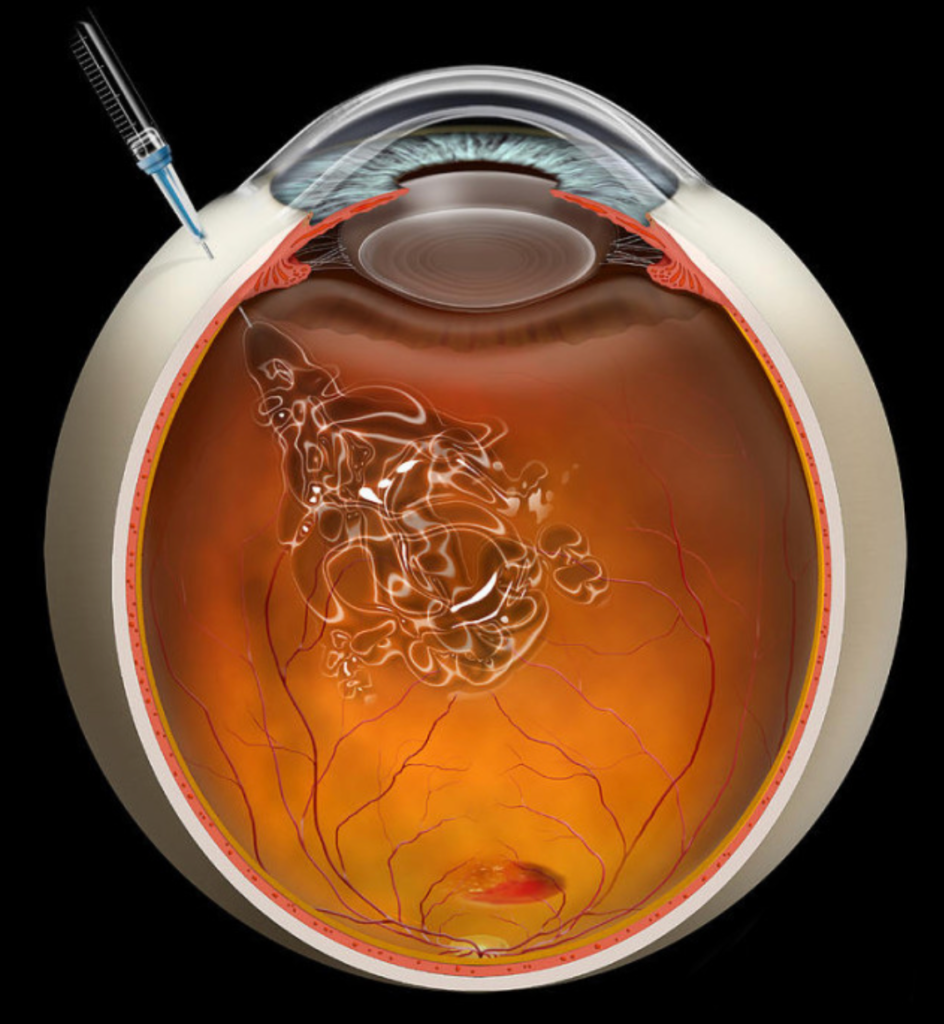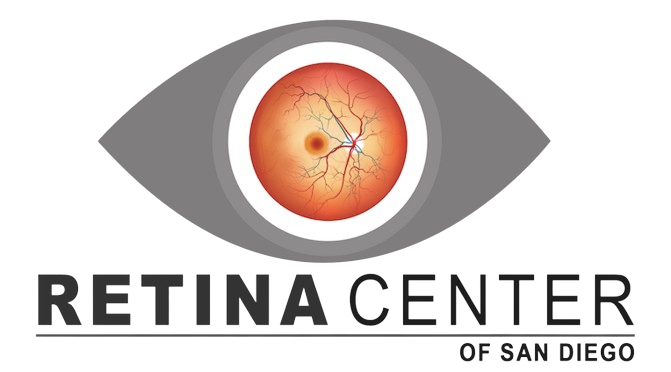Intravitreal Injections
What are Intravitreal Injections?
An intravitreal injection is a medical procedure where medication is injected directly into the vitreous cavity of the eye, which is the space between the lens and the retina. This method allows for precise delivery of medication to treat various eye conditions, particularly those affecting the retina and macula, such as age-related macular degeneration (AMD), diabetic retinopathy, and macular edema.
The most common medications administered via intravitreal injection are anti-vascular endothelial growth factor (anti-VEGF) drugs, which work by inhibiting the growth of abnormal blood vessels in the eye and reducing leakage from existing blood vessels. This can help improve vision and prevent further damage to the retina.
Intravitreal injections are typically performed in an outpatient setting by a retina specialist using local anesthesia. The procedure is relatively quick and typically very well-tolerated with minimal discomfort. Patients are usually advised to avoid strenuous activities and to refrain from rubbing their eyes or getting any water in their eyes in their eyes for 1 day to minimize the risk of complications. There are no other restrictions. There are very rare risks involved, including infection (~0.05%), bleeding, retinal detachment, and sustained increased intraocular pressure (all less than 1%). Therefore, we monitor patients after the injection to watch for any complications.
Process for Intravitreal Injections
Intravitreal injections are a common procedure used to treat various eye conditions, particularly those affecting the retina. Here’s a breakdown of the process:
- Preparation: Preparation: Before the injection, we numb the eye with local anesthesia to minimize discomfort during the procedure. You may also receive eye drops to dilate the pupil, which allows for better visualization of the retina.
- Injection: Once the eye is properly numbed and prepared, Dr. Haak will use a very fine needle to deliver the medication directly into the vitreous cavity of the eye.
- Medication: The medication administered via intravitreal injection is usually an anti-vascular endothelial growth factor (anti-VEGF) drug or a steroid. These medications help to reduce inflammation, prevent the growth of abnormal blood vessels, and improve the health of the retina.
- Post-Injection Care: After the injection, you may experience some discomfort or minor side effects, such as temporary blurriness or floaters in your vision. These symptoms typically subside within a few days. Patients are usually advised to avoid strenuous activities and to refrain from rubbing their eyes to minimize the risk of complications.
- Monitoring: Patients who undergo intravitreal injections often require regular follow-up appointments to monitor their progress and assess the effectiveness of the treatment. Additional injections may be necessary depending on the specific condition being treated and the response to treatment.
Conditions treated with Intravitreal Injections
Intravitreal injections are commonly used to treat various eye conditions, particularly those affecting the retina. Some of the conditions treated with intravitreal injections include:
- Age-related macular degeneration (AMD): Both wet AMD, characterized by abnormal blood vessel growth beneath the macula, and sometimes dry AMD, marked by gradual breakdown of light-sensitive cells in the macula, can be treated with intravitreal injections.
- Diabetic retinopathy: In this condition, abnormal blood vessels grow in the retina due to diabetes. Intravitreal injections may be used to treat diabetic macular edema (DME) and proliferative diabetic retinopathy (PDR).
- Retinal vein occlusion (RVO): This occurs when a blood vessel in the retina becomes blocked, leading to vision loss. Intravitreal injections can be used to treat macular edema associated with RVO.
- Retinal vascular diseases: Conditions such as retinal artery occlusion (RAO) or retinal vasculitis may benefit from intravitreal injections to reduce inflammation and manage complications.
- Macular edema: This can occur due to various underlying conditions, including retinal vein occlusion, diabetic retinopathy, uveitis, and other retinal diseases. Intravitreal injections can help reduce swelling and improve vision.
- Neovascular glaucoma: Intravitreal injections may be used as part of the treatment for neovascular glaucoma, a type of secondary glaucoma caused by the growth of abnormal blood vessels on the iris or in the angle of the eye.
These injections typically contain medications such as anti-vascular endothelial growth factor (anti-VEGF) agents, corticosteroids, or other drugs aimed at targeting the underlying cause of the condition or reducing inflammation and abnormal blood vessel growth in the eye.






